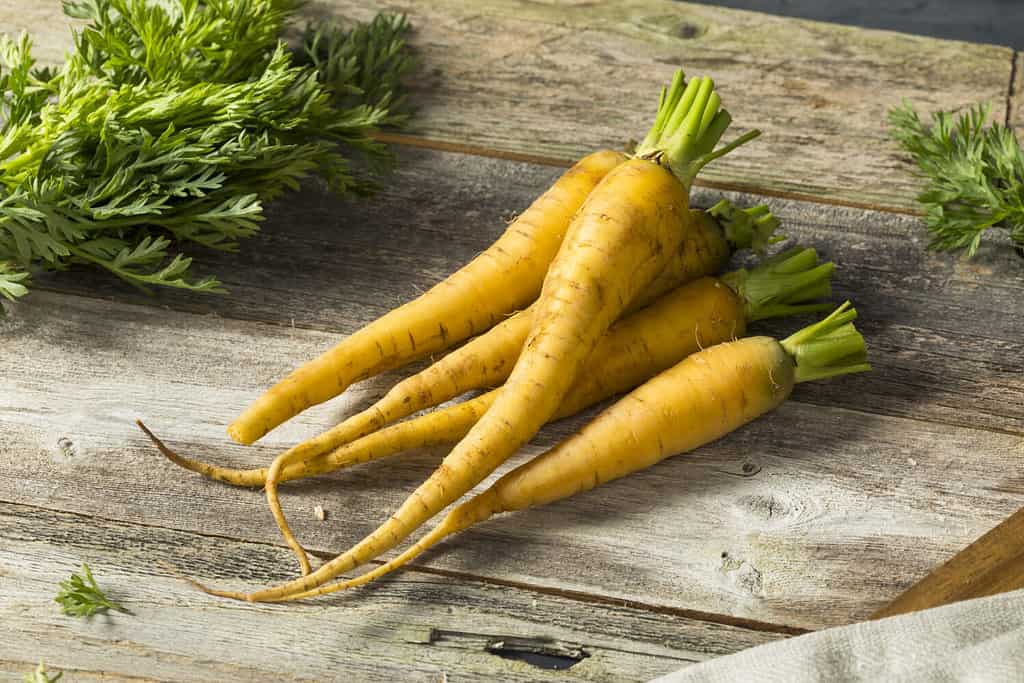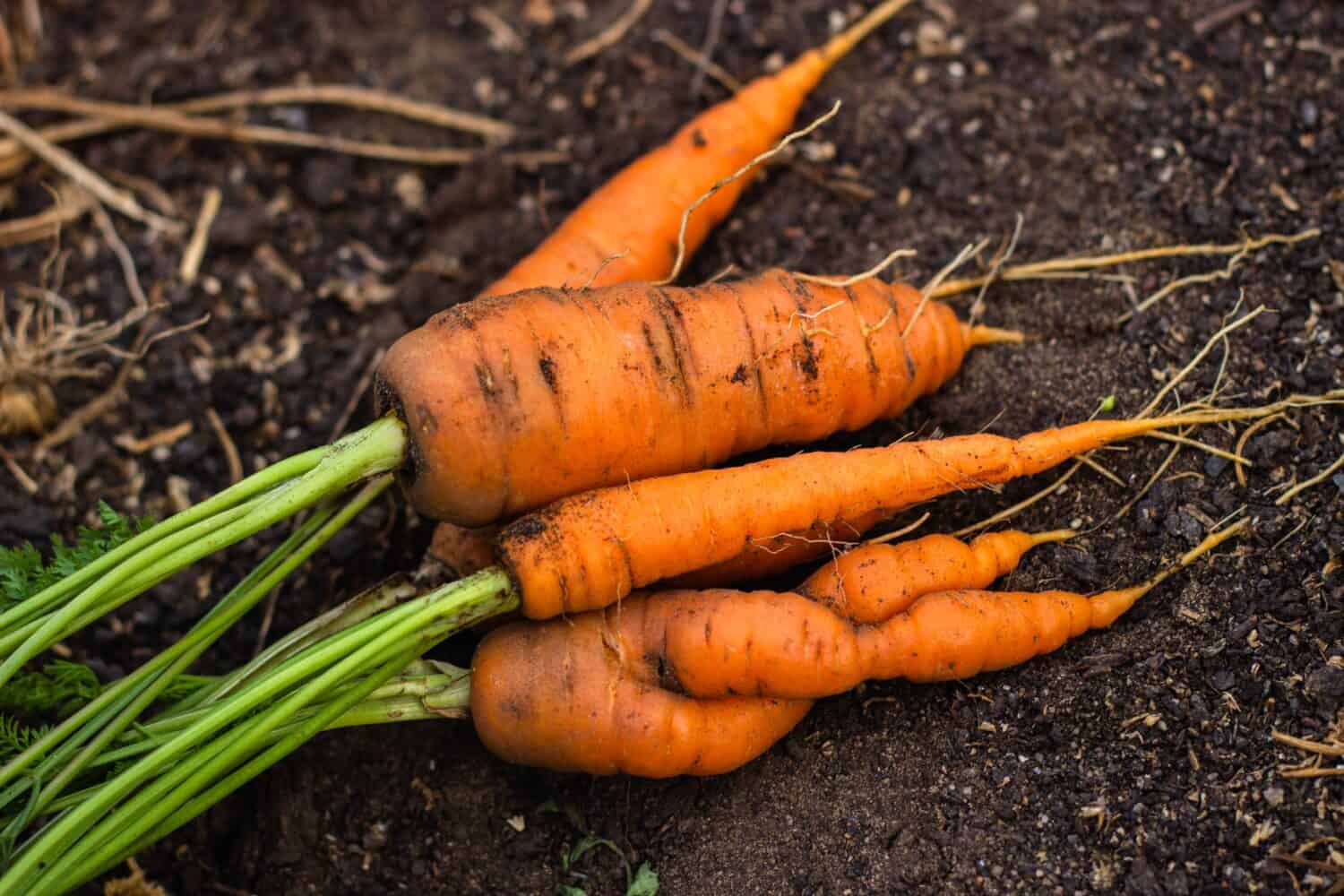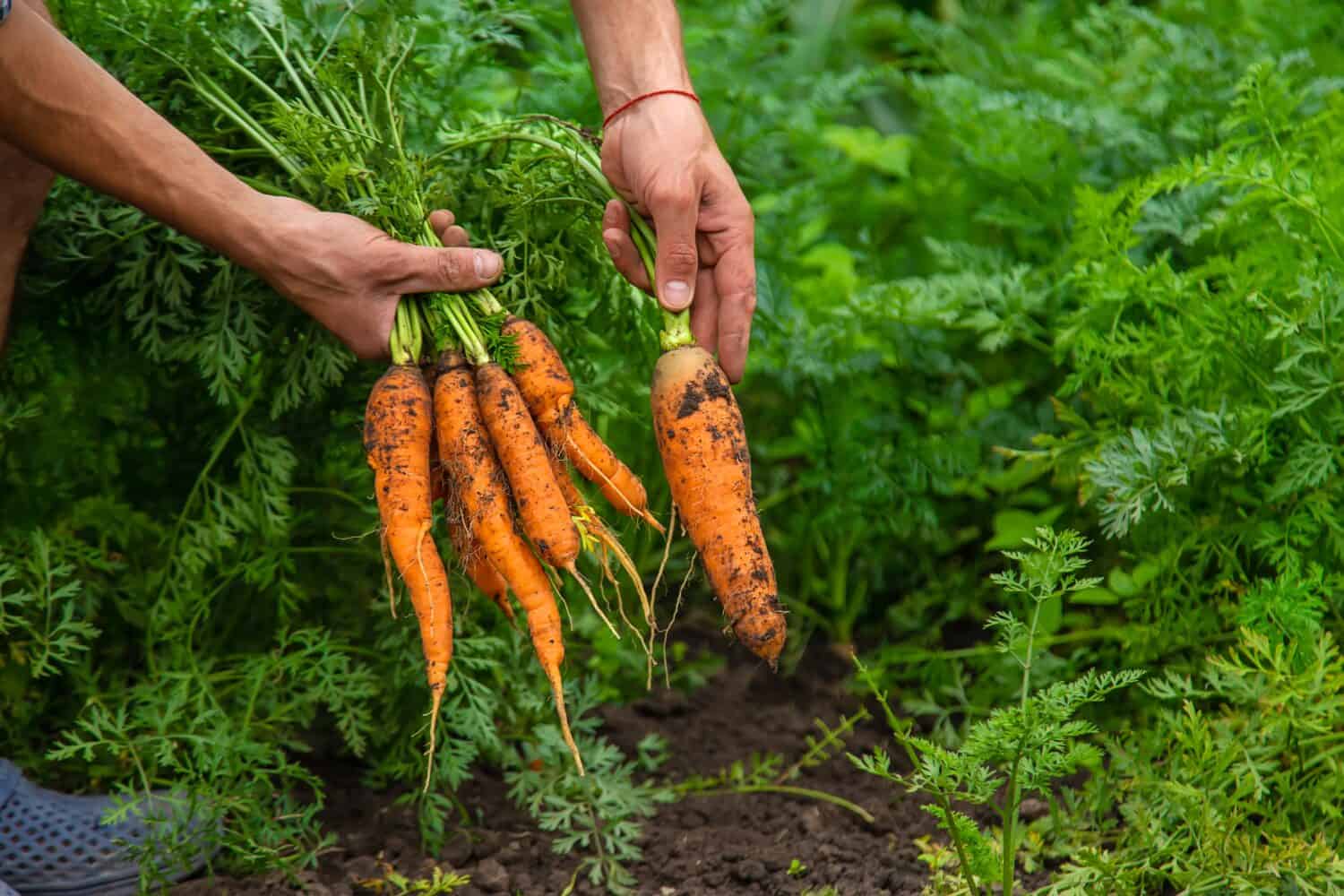Carrots are some of the most popular vegetables for home gardeners and chefs around the world. They can be stored for a long time, eaten raw, and used in iconic dishes like soups and stews.
In addition to their versatility, they also provide many health benefits, boasting a plethora of vitamins, antioxidants, and fiber. It is commonly said that carrots can improve your eyesight; although that may seem a little far-fetched, it is rooted in truth. Carrots contain ample vitamins that are linked to integral processes the human body needs to support long-term eye health.
As with most vegetables, carrots can grow in some pretty unique ways when the conditions are right. From odd shapes to extremely large sizes, home gardeners always seem to have at least one odd carrot out of the bunch each year. Today, we’re going to take a look at the largest carrot that has ever been documented!
What Was the Largest Carrot Ever Grown?
It may surprise you to hear that the largest carrot ever grown was produced in the United States of America. More specifically, it came from a small town in Minnesota, named Ostega. The man who grew it, Christopher Qualley, is surprisingly not a farmer and had only gotten into the hobby of gardening recently before growing his world-record carrot.
Upon unearthing the carrot, it was found to be a staggering 22.44 pounds, which is almost 82 times as large as an average carrot. This weight was (and still is) record-breaking, which is why it holds an honored spot in the Guinness Book of World Records! Instead of being eaten, the carrot was saved by Qualley in an attempt to save seeds for the future. He hoped that saving seeds from the gargantuan vegetable would allow him and other garden hobbyists to grow even larger carrots in the future.
On top of being oversized, the carrot also looked different than your average grocery-store variety. It had an enlarged cap of green growth on the top, which made it look like a small bush growing in the ground. On top of this, the carrot had numerous side shoots coming off the main tap root, which made it appear strange and misshapen in comparison to other root vegetables.
At the end of the day, Christopher’s best tip for other gardeners looking to grow large veggies is to take care of your soil. Make sure that it is of high quality, and that it has the right nutrients/material needs for your veggies to grow.
What Part of the Carrot Plant Do We Eat?

We eat a specialized taproot of the carrot plant. Taproots form deep in the ground in order to access water and nutrients that other plants can’t.
©Brent Hofacker/Shutterstock.com
Like most other vegetables, you may think that carrots are a part of the stems or shoots of a plant. Although this would be logical, it is not true! Typically, vegetables are any edible portion of a plant that isn’t associated with reproductive structures. It is for this reason that such diverse foods such as carrots, lettuce, and broccoli are all considered to be vegetables.
Carrot Growing Basics
Many gardeners find growing carrots to be exceptionally challenging. Many gardeners will stay away from growing them to focus on easier crops instead. They mainly grow under the ground, so the only way to check their health is through the above-ground foliage. Sometimes, checking the foliage isn’t enough, as even the most diligent gardeners may find their harvest to be small or mishappen while still having relatively healthy leaves.
In the end, carrots can be exceptionally needy when it comes to soil, light, nutrient, and water requirements. Most carrots prefer slightly cooler conditions, with enough water to be hydrated while also not being waterlogged. Additionally, they don’t want to be hot but they also want at least six hours of solid sunlight a day.
As previously mentioned, soil is incredibly crucial for proper carrot growth. If your soil is too compact or rocky, your carrots will likely grow to be stunted or misshapen. If your soil doesn’t have the proper nutrients, your carrots may not have enough energy to grow a healthy root.
Mose sources agree that sandy loam soil is optimal for growing carrots. It allows for organic nutrient uptake while also being loose enough for easy tap root growth. Another helpful tip is to plant your carrots directly in the ground. Also, try to thin seedlings out so that each plant has enough room to develop a proper root structure. The idea behind planting directly is that carrots disturbed by the transplanting process tend to not grow well.
Why Do Homegrown Carrots Look So Odd?

In addition to not being selected for sale, homegrown carrots may experience additional growing issues such as improper soil conditions or improper watering.
©Anastasi Mulyukova/Shutterstock.com
It is very common rhetoric that root crops grown in home gardens can look a little strange. This is especially true when they are compared to the pristine vegetables in supermarkets. It is important to note that grocery stores heavily vet their produce. They only display and sell the best-looking fruits and vegetables!
Most home gardeners find that their root crops (especially their carrots) grow strangely. With this in mind, there are some important reasons as to why your home-grown vegetables may look a little worse for wear than grocery-store vegetables.
Packed Soil
As spoken of earlier, packed soil is a huge issue that can impact the growth of your carrot plants. Packed soil can be produced in a variety of ways. Firstly, exposure to high pressure on the soil, such as that of constantly walking over or tamping down your garden beds, can compact the top few inches over time. The presence of dense materials such as rocks and pebbles can also take up space in the ground and compact the soil.
In any case, plants that produce tap roots like carrots have to devote a lot of energy to pushing through the soil to create space. When the soil is too densely packed, they can run into issues with producing straight roots. Instead of devoting extra cellular energy to burrowing through the soil, they will simply split or create large offshoots. These offshoots are the parts of carrots that are often seen as unsightly.
Overcrowding

Carrots grown too close together can bump into each other, causing individual plants to grow smaller.
©Tatevosian Yana/Shutterstock.com
Another error that many gardeners accidentally make is placing plants too close together. Most plants require some space between each other so that nutrients and resources can be spread comfortably. If plants are too close together, they will often compete to a point where both become stunted in growth.
Carrots are even more needy though, as they also require space as a vital resource because they have to grow dense taproots deep down in the soil. Thus, if your carrots are placed too close together, they can often become stunted. This results in them growing tap roots that are too small, or even non-existent.
Not Enough Water
One last way in which carrots can grow strangely is if they receive sporadic or improper watering. Like most plants, carrots react negatively to incorrect water conditions. If carrots are given too much or too little water, they will likely become impacted. Most cease to grow or grow tap roots that have strange characteristics.
Furthermore, many gardeners find that not supplying root crops such as carrots and radishes with enough water can leave them tasting spicy and harsh, likely due to an overproduction of stress compounds within the plant.
The amount of water isn’t the only issue though. Sporadic watering can also impact the growth of your root crops. With no watering or non-consistent watering, carrots often grow at inconsistent rates. This makes them split and crack along their exterior.
The photo featured at the top of this post is © Andrei Porzhezhinskii/Shutterstock.com
Thank you for reading! Have some feedback for us? Contact the AZ Animals editorial team.







